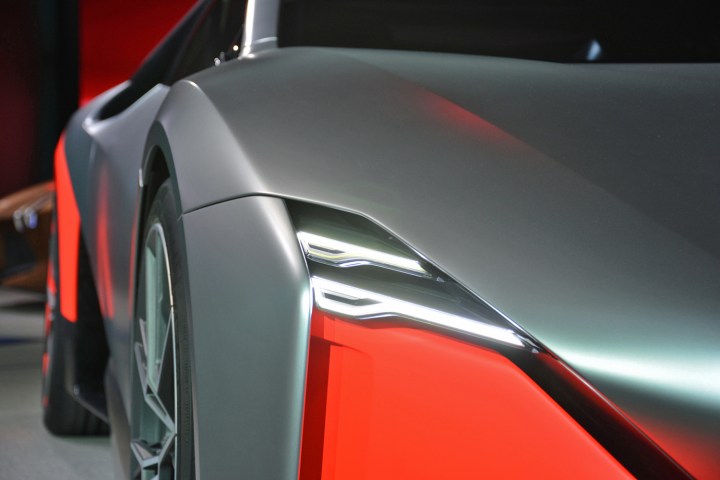
The head-turning, heritage-laced Vision M Next concept unveiled by BMW’s M division paints a clear picture of how the German firm sees the future of performance. It’s notably powered by a gasoline-electric plug-in hybrid powertrain instead of a fully electric one. However, electric M-badged models are more of a when than an if, Digital Trends learned during an event held at BMW’s headquarters.
“In the long term, beyond 2025, I think at a certain point in time there will be also possibly M battery-electric vehicles. M is not a letter for technology. It’s simply a letter for performance, and we don’t only mean zero-to-60-mph. That’s easy,” Klaus Fröhlich, BMW’s head of development, told Digital Trends when asked about the possibility of electrifying the M brand.
He explained why the Vision M Next concept (pictured) is a plug-in hybrid instead of an electric car. Hypothetically, the production version of the Vision M Next concept would weigh between about 3,500 and 3,700 pounds, which isn’t bad for a hybrid coupe with a 600-horsepower, all-wheel drive powertrain capable of delivering up to 60 miles of electric-only driving. Taking the turbocharged four-cylinder engine out of the equation would require using a huge battery pack to offer acceptable range and performance. In turn, the pack would make an electric Vision M Next weigh about 4,600 pounds.
“That’s a big, big difference,” he summed up. It wouldn’t handle as well; ultimately, it wouldn’t live up to BMW’s promise of delivering the ultimate driving machine.
The Vision M Next concept hasn’t officially been approved for production, though Fröhlich and other executives hinted they’d like to see it become a reality. His comments confirm that M — like rivals Audi Sport and Mercedes-AMG — will offer plug-in hybrid cars sooner rather than later.
“M is not about longitudinal acceleration only. The cars also have to be fast on the track, and fun to drive on a winding road. Weight is key, then, and I think plug-in hybrid is the next step,” he said. To add context, he pointed out that the firm has gradually shifted from naturally-aspirated to turbocharged engines in order to continue cranking up the performance knob while keeping fuel economy in check.
Editors' Recommendations
- The Maserati GranCabrio Folgore is one of the best-looking EVs yet
- Audi Q6 e-tron ushers in the automaker’s next EV phase
- Porsche’s most powerful production car is an EV
- Here’s how Ford will give EV customers Tesla Supercharger access
- 2024 Chevrolet Equinox EV: price, release date, range, and more




